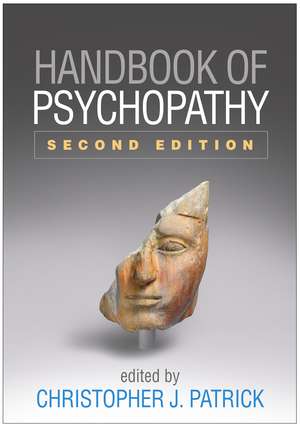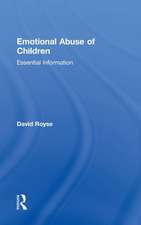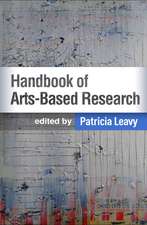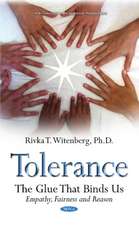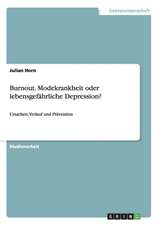Handbook of Psychopathy, Second Edition
Editat de Christopher J. Patricken Limba Engleză Paperback – 31 iul 2019
Widely considered the go-to reference--and now extensively revised with over 65% new material--this authoritative handbook surveys the landscape of current knowledge on psychopathy and addresses essential clinical and applied topics. Leading researchers explore major theoretical models; symptomatology and diagnostic subtypes; assessment methods; developmental pathways; and causal influences, from genes and neurobiology to environmental factors. The volume examines manifestations of psychopathy in specific populations as well as connections to antisocial behavior and recidivism. It presents contemporary perspectives on prevention and treatment and discusses special considerations in clinical and forensic practice.
New to This Edition
*Extensively revised with more than a decade's theoretical, empirical, and clinical advances.
*Many new authors and topics.
*Expanded coverage of phenotypic facets, with chapters on behavioral disinhibition, callous–unemotional traits, and boldness.
*Chapters on DSM-5, clinical interviewing, cognitive and emotional processing, and serial murder.
*Significantly updated coverage of etiology, assessment methods, neuroimaging research, and adult and juvenile treatment approaches.
New to This Edition
*Extensively revised with more than a decade's theoretical, empirical, and clinical advances.
*Many new authors and topics.
*Expanded coverage of phenotypic facets, with chapters on behavioral disinhibition, callous–unemotional traits, and boldness.
*Chapters on DSM-5, clinical interviewing, cognitive and emotional processing, and serial murder.
*Significantly updated coverage of etiology, assessment methods, neuroimaging research, and adult and juvenile treatment approaches.
Preț: 448.72 lei
Preț vechi: 487.74 lei
-8% Nou
Puncte Express: 673
Preț estimativ în valută:
85.86€ • 89.87$ • 71.46£
85.86€ • 89.87$ • 71.46£
Carte disponibilă
Livrare economică 10-24 martie
Livrare express 22-28 februarie pentru 66.12 lei
Preluare comenzi: 021 569.72.76
Specificații
ISBN-13: 9781462541232
ISBN-10: 1462541232
Pagini: 828
Dimensiuni: 178 x 254 x 43 mm
Greutate: 1.45 kg
Ediția:2 ed
Editura: Taylor & Francis
Colecția Guilford Press
Locul publicării:Oxford, United Kingdom
ISBN-10: 1462541232
Pagini: 828
Dimensiuni: 178 x 254 x 43 mm
Greutate: 1.45 kg
Ediția:2 ed
Editura: Taylor & Francis
Colecția Guilford Press
Locul publicării:Oxford, United Kingdom
Public țintă
Professional Practice & DevelopmentCuprins
I. Theoretical and Empirical Foundations of Psychopathy
1. Psychopathy as Masked Pathology, Christopher J. Patrick
2. Psychopathy, Sociopathy, and Antisocial Personality Disorder, David T. Lykken
Commentary: A Minnesota Perspective on Lykken's "Psychopathy, Sociopathy, and Antisocial Personality Disorder," William G. Iacono
3. The PCL-R Assessment of Psychopathy, Robert D. Hare, Craig S. Neumann, & Andreas Mokros
4. The Response Modulation Hypothesis: Formulation, Development, and Implications for Psychopathy, Rachel Bencic Hamilton & Joseph P. Newman
5. Temperament Risk Factors for Psychopathy, Don C. Fowles
II. Distinct Phenotypic Facets of Psychopathy
6. Externalizing Proneness and Psychopathy, Lindsay D. Nelson & Jens Foell
7. Callous–Unemotional Traits, Essi Viding & Eva R. Kimonis
8. Boldness: Conceptual and Methodological Issues, Scott O. Lilienfeld, Ashley L. Watts, Sarah Francis Smith, & Robert D. Latzman
III. Assessment and Diagnosis of Psychopathy
9. Capturing Psychopathic Personality: Penetrating the Mask of Sanity through Clinical Interview, David J. Cooke & Caroline Logan
10. The Self-Report Assessment of Psychopathy: Challenges, Pitfalls, and Promises, Martin Sellbom, Scott O. Lilienfeld, Katherine A. Fowler, & Kristen L. McCrary
11. Psychopathy and Personality: An Articulation of the Benefits of a Trait-Based Approach, Donald R. Lynam, Joshua D. Miller, & Karen J. Derefinko
12. Psychopathy and DSM-5 Psychopathology, Thomas A. Widiger & Cristina Crego
13. Variants (“Subtypes”) of Psychopathy, Brian M. Hicks & Laura E. Drislane
IV. Etiology and Mechanisms of Psychopathy
14. Genetic and Environmental Influences on Psychopathy and Antisocial Behavior, Irwin D. Waldman, Soo Hyun Rhee, Devon LoParo, & Yunsoo Park
15. Family Background and Psychopathy, David P. Farrington & Henriette Bergstrøm
16. The Neuroanatomical Bases of Psychopathy: A Review of Brain Imaging Findings, Yaling Yang & Adrian Raine
17. Psychopathy and Brain Function: Insights from Neuroimaging Research, R. James R. Blair, Harma Meffert, Soonjo Hwang, & Stuart F. White
18. Cognitive and Emotional Processing in Psychopathy, Christopher J. Patrick
19. Psychopathy and Developmental Pathways to Antisocial Behavior in Youth, Paul J. Frick & Monica A. Marsee
V. Psychopathy in Specific Subpopulations
20. Psychopathy in Children and Adolescents: Assessment and Critical Questions Regarding Conceptualization, Randall T. Salekin, Henrik Andershed, & Abby P. Clark
21. Psychopathy in Women: Assessment, Manifestations, and Etiology, Edelyn Verona & Jennifer Vitale
22. Cultural and Ethnic Variations in Psychopathy, Kostas Fanti, Alexandros Lordos, Elizabeth A. Sullivan, & David S. Kosson
23. Deviance at Its Darkest: Serial Murder and Psychopathy, Eric W. Hickey, Bethany K. Walters, Laura E. Drislane, Isabella M. Palumbo, & Christopher J. Patrick
24. Successful Psychopathy, Stephen D. Benning, Noah C. Venables, & Jason R. Hall
VI. Clinical and Applied Issues in Psychopathy
25. Psychopathy and Aggression, Stephen Porter, Michael T. Woodworth, & Pamela J. Black
26. Psychopathy and Substance Use Disorders, Jarrod M. Ellingson, Andrew K. Littlefield, Alvaro Vergés, & Kenneth J. Sher
27. The Role of Psychopathy in Sexual Coercion against Women: An Update and Expansion, Raymond A. Knight & Jean-Pierre Guay
28. Risk for Criminal Recidivism: The Role of Psychopathy, Kevin S. Douglas, Gina M. Vincent, & John F. Edens
29. Treatment of Adults and Juveniles with Psychopathy, Devon Polaschek & Jennifer L. Skeem
30. Legal and Ethical Issues in the Assessment and Treatment of Psychopathy, John F. Edens, John Petrila, & Shannon E. Kelley
VII. Conclusions and Future Directions
31. Understanding Psychopathy: Where We Are, Where We Can Go, Dustin B. Wygant, Dustin A. Pardini, Abigail A. Marsh, & Christopher J. Patrick
1. Psychopathy as Masked Pathology, Christopher J. Patrick
2. Psychopathy, Sociopathy, and Antisocial Personality Disorder, David T. Lykken
Commentary: A Minnesota Perspective on Lykken's "Psychopathy, Sociopathy, and Antisocial Personality Disorder," William G. Iacono
3. The PCL-R Assessment of Psychopathy, Robert D. Hare, Craig S. Neumann, & Andreas Mokros
4. The Response Modulation Hypothesis: Formulation, Development, and Implications for Psychopathy, Rachel Bencic Hamilton & Joseph P. Newman
5. Temperament Risk Factors for Psychopathy, Don C. Fowles
II. Distinct Phenotypic Facets of Psychopathy
6. Externalizing Proneness and Psychopathy, Lindsay D. Nelson & Jens Foell
7. Callous–Unemotional Traits, Essi Viding & Eva R. Kimonis
8. Boldness: Conceptual and Methodological Issues, Scott O. Lilienfeld, Ashley L. Watts, Sarah Francis Smith, & Robert D. Latzman
III. Assessment and Diagnosis of Psychopathy
9. Capturing Psychopathic Personality: Penetrating the Mask of Sanity through Clinical Interview, David J. Cooke & Caroline Logan
10. The Self-Report Assessment of Psychopathy: Challenges, Pitfalls, and Promises, Martin Sellbom, Scott O. Lilienfeld, Katherine A. Fowler, & Kristen L. McCrary
11. Psychopathy and Personality: An Articulation of the Benefits of a Trait-Based Approach, Donald R. Lynam, Joshua D. Miller, & Karen J. Derefinko
12. Psychopathy and DSM-5 Psychopathology, Thomas A. Widiger & Cristina Crego
13. Variants (“Subtypes”) of Psychopathy, Brian M. Hicks & Laura E. Drislane
IV. Etiology and Mechanisms of Psychopathy
14. Genetic and Environmental Influences on Psychopathy and Antisocial Behavior, Irwin D. Waldman, Soo Hyun Rhee, Devon LoParo, & Yunsoo Park
15. Family Background and Psychopathy, David P. Farrington & Henriette Bergstrøm
16. The Neuroanatomical Bases of Psychopathy: A Review of Brain Imaging Findings, Yaling Yang & Adrian Raine
17. Psychopathy and Brain Function: Insights from Neuroimaging Research, R. James R. Blair, Harma Meffert, Soonjo Hwang, & Stuart F. White
18. Cognitive and Emotional Processing in Psychopathy, Christopher J. Patrick
19. Psychopathy and Developmental Pathways to Antisocial Behavior in Youth, Paul J. Frick & Monica A. Marsee
V. Psychopathy in Specific Subpopulations
20. Psychopathy in Children and Adolescents: Assessment and Critical Questions Regarding Conceptualization, Randall T. Salekin, Henrik Andershed, & Abby P. Clark
21. Psychopathy in Women: Assessment, Manifestations, and Etiology, Edelyn Verona & Jennifer Vitale
22. Cultural and Ethnic Variations in Psychopathy, Kostas Fanti, Alexandros Lordos, Elizabeth A. Sullivan, & David S. Kosson
23. Deviance at Its Darkest: Serial Murder and Psychopathy, Eric W. Hickey, Bethany K. Walters, Laura E. Drislane, Isabella M. Palumbo, & Christopher J. Patrick
24. Successful Psychopathy, Stephen D. Benning, Noah C. Venables, & Jason R. Hall
VI. Clinical and Applied Issues in Psychopathy
25. Psychopathy and Aggression, Stephen Porter, Michael T. Woodworth, & Pamela J. Black
26. Psychopathy and Substance Use Disorders, Jarrod M. Ellingson, Andrew K. Littlefield, Alvaro Vergés, & Kenneth J. Sher
27. The Role of Psychopathy in Sexual Coercion against Women: An Update and Expansion, Raymond A. Knight & Jean-Pierre Guay
28. Risk for Criminal Recidivism: The Role of Psychopathy, Kevin S. Douglas, Gina M. Vincent, & John F. Edens
29. Treatment of Adults and Juveniles with Psychopathy, Devon Polaschek & Jennifer L. Skeem
30. Legal and Ethical Issues in the Assessment and Treatment of Psychopathy, John F. Edens, John Petrila, & Shannon E. Kelley
VII. Conclusions and Future Directions
31. Understanding Psychopathy: Where We Are, Where We Can Go, Dustin B. Wygant, Dustin A. Pardini, Abigail A. Marsh, & Christopher J. Patrick
Notă biografică
Christopher J. Patrick, PhD, is Professor of Psychology at Florida State University. His research interests include psychopathy, antisocial behavior, substance abuse, personality, fear and fearlessness, psychophysiology, and affective and cognitive neuroscience, and he is author of more than 270 articles and chapters on these topics. Dr. Patrick is past president of the Society for the Scientific Study of Psychopathy (SSSP) and the Society for Psychophysiological Research (SPR), a recipient of Early Career awards from SPR and the American Psychological Association (APA), and a recipient of SSSP’s Lifetime Career Contribution award. He is also a Fellow of APA and of the Association for Psychological Science. Dr. Patrick served as a workgroup member for the Research Diagnostic Criteria initiative of the National Institute of Mental Health and as a scientific advisor to the DSM-5 Personality Disorders Workgroup. He is currently a member of the American Psychiatric Association’s Review Committee for Externalizing Disorders and Personality Disorders, which evaluates proposed changes to DSM-5.
Recenzii
"Patrick has assembled an impressive group of authors for this updated second edition. Providing comprehensive coverage of current issues in psychopathy research, the book allows the reader to peer behind the 'mask of sanity.' This is an invaluable A to Z primer on psychopathy that highlights new insights into etiology, culture, gender, ethnicity, development, and more, with each chapter emphasizing avenues for future research. Highly recommended for students, researchers, and clinicians alike."--Adelle Forth, PhD, President, Society for the Scientific Study of Psychopathy; Department of Psychology, Carleton University, Ottawa, Canada
"An admirably comprehensive and scholarly second edition. Broad in scope--covering theory, manifestations, assessment, etiology, development, subpopulations, treatment, and more--and rich in empirical data, this handbook will be the authoritative resource for years to come. Chapters are written by renowned investigators and clinicians from across the world. A book especially apt for current times, the Handbook is essential reading for clinicians, researchers, attorneys, judges, and social policymakers seeking to understand psychopathy and its place in the spectrum of antisocial behavior and to mitigate its effects on society. I recommend it highly!"--Andrew E. Skodol, MD, Research Professor of Psychiatry, University of Arizona College of Medicine
"Patrick has once again succeeded in bringing together the foremost scholars and practitioners on psychopathy. The second edition of the Handbook captures more than a decade of clinical and conceptual advances; about half the chapters are new and others are essentially rewritten. Across chapters, the triarchic model serves as an integrative framework for understanding different conceptualizations of psychopathy and their respective assessment measures. The volume addresses this complex topic with breadth and depth, from etiological explanations to clinical and forensic applications."--Richard Rogers, PhD, ABPP, Regents Professor of Psychology, University of North Texas
"Few human phenomena are more intriguing than psychopathy, and few scholarly handbooks have attracted as much interest as this landmark work. In this thoroughly revised and updated second edition, Patrick raises the bar yet again. Particularly welcome is the emphasis on contemporary empirical and multidimensional models of psychopathic traits, a key development since the first edition that is interwoven throughout this edition. A 'must' for the bookshelves of all mental health practitioners and scholars, and suitable for upper-level courses in a variety of disciplines, the Handbook provides thorough and groundbreaking insights that will shape the field for many years to come."--Robert F. Krueger, PhD, Distinguished McKnight University Professor, Department of Psychology, University of Minnesota
"Reflecting developments in the field, the second edition of the Handbook focuses less on the syndrome of psychopathy and more on psychopathic traits measured dimensionally in the general population. It includes thorough, thoughtful reviews of current findings that lay the bases for future research. Controversies in the field are not avoided--rather, theories and models are evaluated in light of existing data. The volume addresses assessment and rehabilitation; presents leading formulations of psychopathy; and explains recent advances in our understanding of the etiological mechanisms promoting psychopathy, associated structural and functional neural abnormalities, and corresponding dysfunctions in cognitive and affective processing. This second edition is an indispensable resource for students and faculty researching psychopathy, as well as policymakers, practitioners working with offenders, and legal scholars."--Sheilagh Hodgins, PhD, FRSC, Institut Universitaire en Santé Mentale de Montréal, Département de Psychiatrie, Université de Montréal, Canada
"The encyclopedic range of topics is striking, with the concept of psychopathy evaluated from many different angles. Of particular note is the second edition's consideration of important contemporary developments, including ongoing discussions around definitions of constructs--for example, the alternative DSM-5 model for personality disorders, or the role of boldness in the conceptualization of psychopathy. It presents the latest thinking about potential etiological mechanisms, including influences as diverse as neurobiological and cultural factors. The volume offers valuable contributions for practicing clinicians as well as scholars, from early-career to senior professionals."--Leslie C. Morey, PhD, George T. & Gladys H. Abell Professor of Psychology, Texas A&M University
"I have used this text at both the graduate and undergraduate levels. At the undergraduate level, this book was appropriate as a stand-alone text for a special topics course in psychopathy. The breadth of material allows the instructor to select specific chapters to use during lectures to provide students with an in-depth understanding of the topic; remaining chapters are an excellent source for student presentations and papers on more specific aspects of psychopathy. At the graduate level, there are several chapters that complement the material normally covered in courses such as criminal behavior, forensic psychology, psychological diagnosis and assessment, tests and measures, biopsychology, social psychology, aggression, violence risk, and threat assessment. Overall, the Handbook succeeds in being rigorous yet accessible. Students are able to relate information from the text to cases in the popular media and concepts in the scientific literature."--Richard P. Conti, PhD, Coordinator, Forensic Psychology Programs, and Associate Professor, School of Psychology, Kean University
-"An admirably comprehensive and scholarly second edition. Broad in scope--covering theory, manifestations, assessment, etiology, development, subpopulations, treatment, and more--and rich in empirical data, this handbook will be the authoritative resource for years to come. Chapters are written by renowned investigators and clinicians from across the world. A book especially apt for current times, the Handbook is essential reading for clinicians, researchers, attorneys, judges, and social policymakers seeking to understand psychopathy and its place in the spectrum of antisocial behavior and to mitigate its effects on society. I recommend it highly!"--Andrew E. Skodol, MD, Research Professor of Psychiatry, University of Arizona College of Medicine
"Patrick has once again succeeded in bringing together the foremost scholars and practitioners on psychopathy. The second edition of the Handbook captures more than a decade of clinical and conceptual advances; about half the chapters are new and others are essentially rewritten. Across chapters, the triarchic model serves as an integrative framework for understanding different conceptualizations of psychopathy and their respective assessment measures. The volume addresses this complex topic with breadth and depth, from etiological explanations to clinical and forensic applications."--Richard Rogers, PhD, ABPP, Regents Professor of Psychology, University of North Texas
"Few human phenomena are more intriguing than psychopathy, and few scholarly handbooks have attracted as much interest as this landmark work. In this thoroughly revised and updated second edition, Patrick raises the bar yet again. Particularly welcome is the emphasis on contemporary empirical and multidimensional models of psychopathic traits, a key development since the first edition that is interwoven throughout this edition. A 'must' for the bookshelves of all mental health practitioners and scholars, and suitable for upper-level courses in a variety of disciplines, the Handbook provides thorough and groundbreaking insights that will shape the field for many years to come."--Robert F. Krueger, PhD, Distinguished McKnight University Professor, Department of Psychology, University of Minnesota
"Reflecting developments in the field, the second edition of the Handbook focuses less on the syndrome of psychopathy and more on psychopathic traits measured dimensionally in the general population. It includes thorough, thoughtful reviews of current findings that lay the bases for future research. Controversies in the field are not avoided--rather, theories and models are evaluated in light of existing data. The volume addresses assessment and rehabilitation; presents leading formulations of psychopathy; and explains recent advances in our understanding of the etiological mechanisms promoting psychopathy, associated structural and functional neural abnormalities, and corresponding dysfunctions in cognitive and affective processing. This second edition is an indispensable resource for students and faculty researching psychopathy, as well as policymakers, practitioners working with offenders, and legal scholars."--Sheilagh Hodgins, PhD, FRSC, Institut Universitaire en Santé Mentale de Montréal, Département de Psychiatrie, Université de Montréal, Canada
"The encyclopedic range of topics is striking, with the concept of psychopathy evaluated from many different angles. Of particular note is the second edition's consideration of important contemporary developments, including ongoing discussions around definitions of constructs--for example, the alternative DSM-5 model for personality disorders, or the role of boldness in the conceptualization of psychopathy. It presents the latest thinking about potential etiological mechanisms, including influences as diverse as neurobiological and cultural factors. The volume offers valuable contributions for practicing clinicians as well as scholars, from early-career to senior professionals."--Leslie C. Morey, PhD, George T. & Gladys H. Abell Professor of Psychology, Texas A&M University
"I have used this text at both the graduate and undergraduate levels. At the undergraduate level, this book was appropriate as a stand-alone text for a special topics course in psychopathy. The breadth of material allows the instructor to select specific chapters to use during lectures to provide students with an in-depth understanding of the topic; remaining chapters are an excellent source for student presentations and papers on more specific aspects of psychopathy. At the graduate level, there are several chapters that complement the material normally covered in courses such as criminal behavior, forensic psychology, psychological diagnosis and assessment, tests and measures, biopsychology, social psychology, aggression, violence risk, and threat assessment. Overall, the Handbook succeeds in being rigorous yet accessible. Students are able to relate information from the text to cases in the popular media and concepts in the scientific literature."--Richard P. Conti, PhD, Coordinator, Forensic Psychology Programs, and Associate Professor, School of Psychology, Kean University
Descriere
Widely considered the go-to reference--and now extensively revised with over 65% new material--this authoritative handbook surveys the landscape of current knowledge on psychopathy and addresses essential clinical and applied topics.
